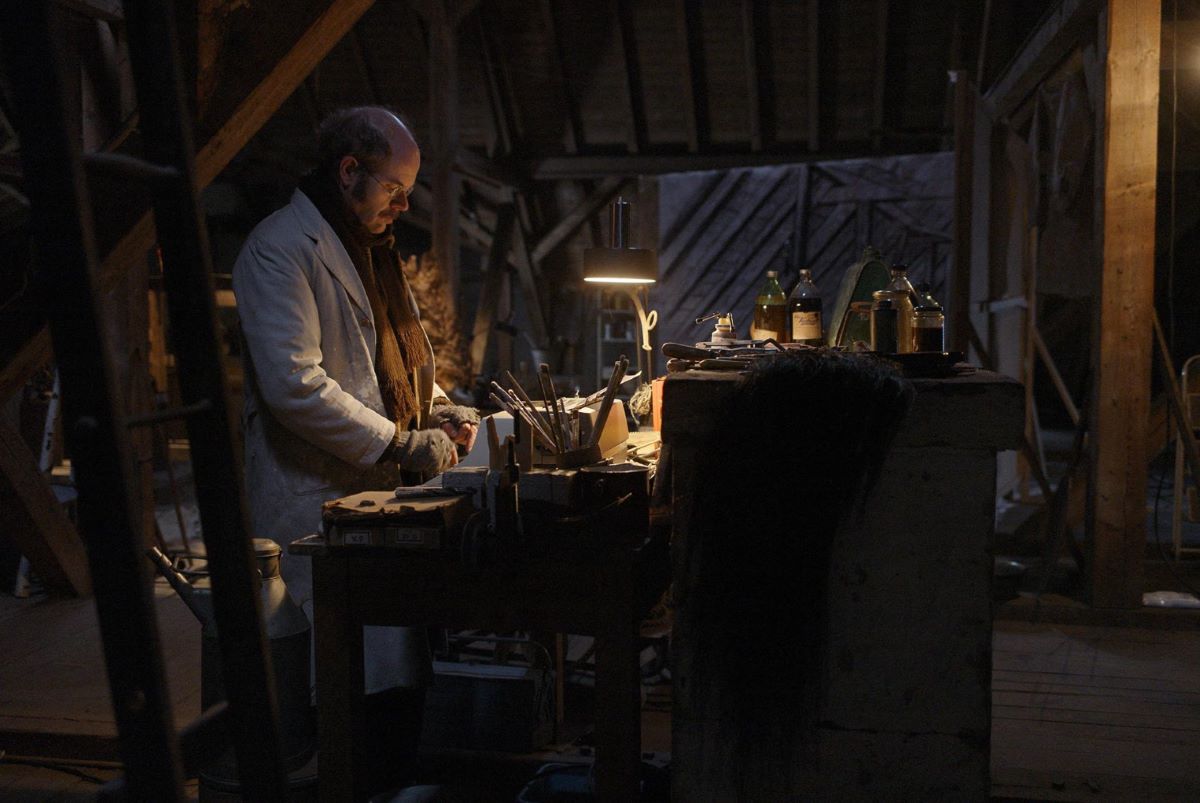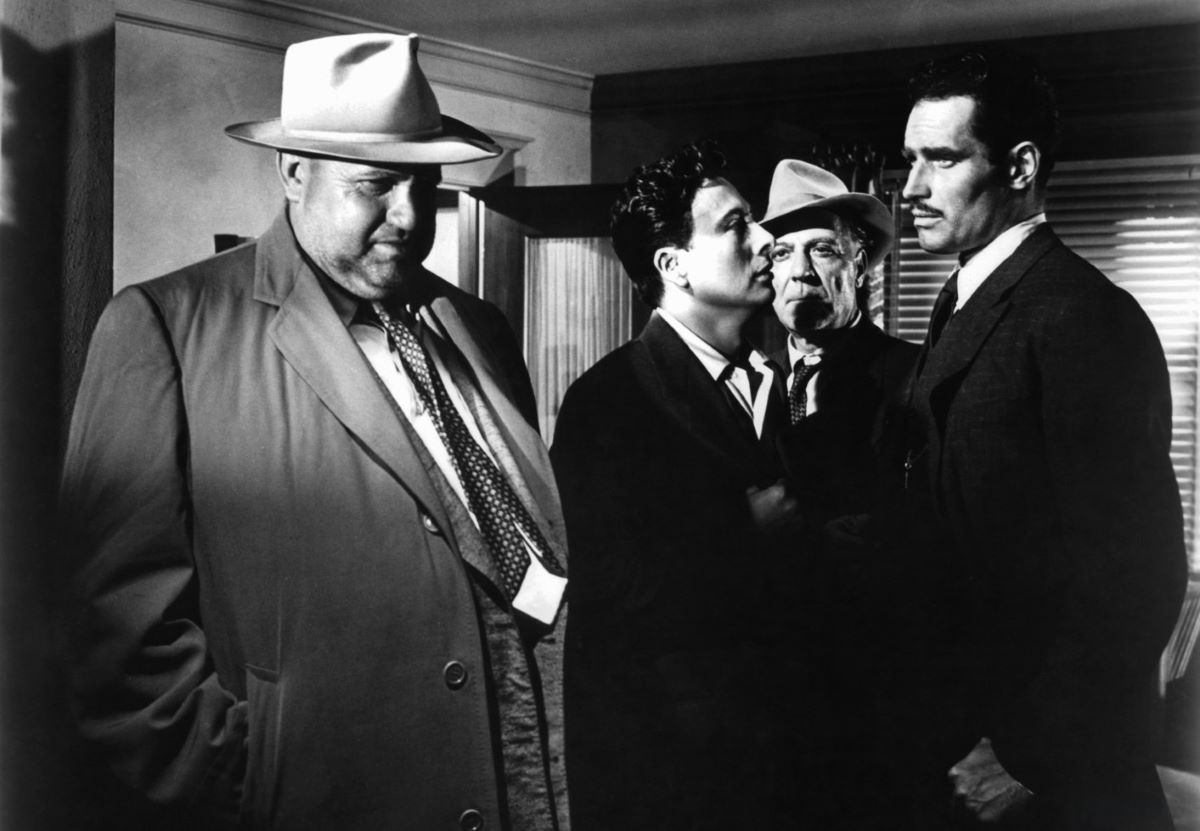by James Verniere
Screwing with audiences’ heads was Stanley Kubrick’s favorite hobby outside of chess, which is just another way of screwing with heads. One of the flaws of Eyes Wide Shut (1999), Kubrick’s posthumously released, valedictory film, may be that it doesn’t screw with our heads enough.
2001: A Space Odyssey (1968), however, remains Kubrick’s crowning, confounding achievement. Homeric sci-fi film, conceptual artwork, and dopeheads’ intergalactic joyride, 2001 pushed the envelope of film at a time when Mary Poppins and The Sound of Music ruled the box office.
As technological achievement, it was a quantum leap beyond Flash Gordon and Buck Rogers serials, although it used many of the same fundamental techniques. Steven Spielberg called 2001 “the Big Bang” of his filmmaking generation. It was the precursor of Andrei Tarkovsky’s Solaris (1972), Spielberg’s Close Encounters of the Third Kind (1977) and George Lucas’s Star Wars (1977), as well as the current digital revolution. At the time of its release, 2001: A Space Odyssey created a nationwide stir, in large part due to its willful opacity. Among numerical titles, only George Orwell’s Nineteen Eighty-four and Joseph Heller’s Catch-22 compare to 2001 in terms of instant recognizability.
There are antecedents to 2001, among them Georges Melies’s pioneering Voyage to the Moon (1902), William Cameron Menzies’s H.G. Wells-scripted Things to Come (1936), and George Pal’s Destination Moon (1950), a surprisingly realistic film coscripted by popular science-fiction author Robert A. Heinlein (Stranger in a Strange Land).
Production of 2001, an expansion of Arthur C. Clarke’s 1951 short story “The Sentinel,” began in December 1965 at MGM Studios at Boreham Wood, England. Shot in Super Panavision and released in Cinerama, the film premiered in New York City about a year before Neil Armstrong’s historic walk on the moon.
The film opens about 3 million years in the past and ends in the eponymous 2001 with a sequence dubbed, with a wink and nod to the Age of Aquarius, “the ultimate trip.” In between, 2001: A Space Odyssey may be more of a series of landmark sequences than a fully coherent or satisfying experience. But its landmarks have withstood the test of time and repeated parody.
The first arrives in the wordless “Dawn of Man” episode, in which Kubrick dramatizes a crucial moment in human evolution, the sci-fi equivalent of Michelangelo’s The Creation of Adam. After apelike creatures (costumed dancers and mimes) subsisting in a brutish wasteland encounter a mysterious black monolith, their leader picks up a bone, puzzles out how to use it as a tool/weapon (a small step for a man, a giant step for a man-ape), and smashes a warthog skeleton to pieces as Richard Strauss’s “Thus Spake Zarathustra” thunders on the soundtrack.
After rejecting a score commissioned from Alex North (who was hired after Kubrick failed to lure composer Carl Orff to the project), Kubrick decided to use existing music, and he uses it brilliantly here, making Strauss’s unexpectedly juxtaposed, anthemlike theme an indivisible part of the scene, perhaps the most famous Kubrick-arranged marriage of music and image.
That this landmark scene would be parodied, often hilariously in television commercials, on Saturday Night Live and in Carl Gottlieb’s Caveman (1981) and Mel Brooks’s History of the World—Part 1 (1981) is only one indication of what a pervasive pop culture icon it soon became.
When the man-ape then tosses his newfound weapon/tool end-over-end and the tumbling bone turns into an orbiting satellite, Kubrick makes the cinemas most famous jump-cut and “eye rhyme.” The subsequent “docking” sequence featuring a sleek spacecraft and a revolving space station, the much commented upon ballet méchanique sequence, suggests a link between Ezekiel and Freud. Johann Strauss’s “Blue Danube Waltz,” which we hear as the spacecraft makes its spiraling approach to the “wheel,” becomes literal music of the spheres in this scene, celestial accompaniment to a cosmic, coital dance.
As this scene demonstrates, even more so than in Dr. Strangelove or: How I Learned to Stop Worrying and Love the Bomb (1964), technology is sexy (as it was to Kubrick, who loved gadgets, designed lenses, and collected cameras and electronic equipment). Kubrick’s vision of space travel is sensual, obsessively detailed, and authentic: the sleek Space Shuttle-like orbiter; revolving “space wheel”; lipstick-red Olivier Mourgue space station lounges; the centrifugal hub of the Discovery, monitors and computer readouts; the “spine” of the Discovery, buglike “space pods”; sarcophogilike hibernation units; and the Cyclopean HAL 9000 computer. Kubrick persuaded NASA, Boeing, IBM, and Pan Am among other aerospace and technology corporations to contribute designs and technical advisers to the film in exchange for planting their corporate logos on the screen, in this case for reasons that make aesthetic sense (Ridley Scott followed Kubrick’s lead in the design of Blade Runner and Alien). 2001 also pokes fun at the future outer-space expansion of such franchises as Howard Johnsons and Hilton Hotels. A more prophetic vision of the new millennium might be hard to find.
More than authentic and prophetic, Kubrick’s high-tech vision is beautiful. Some critics of the day complained of the film’s “sterile” look. But Kubrick’s minimalism is the correct aesthetic and engineering choice. 2001 bids farewell to the upholstered, gewgaw-choked interiors of Jules Verne.
Although almost a documentary of space travel, 2001 also operates on the level of a dream. Its comparative wordlessness—with an amazingly low ratio of dialogue to running time, 2001 is a virtual silent film—forces viewers to concentrate on the hypnotic blend of music and image. It often seems like a brain-teasing exercise in analogies: bone is to HAL as HAL is to monolith, etc. Its Escher- and Magritte-like images of Discovery crewmen Dave Poole (Gary Lockwood) and Frank Bowman (Kier Dullea) defying spatial logic as they move around inside the spacecraft, and the film’s many ellipses and alignments, suggest the topsy-turvy, free-floating, free-associative landscape of a dream. Also contributing to the dreamlike pull are mirror images—the warthog skeleton and fossil-like design of the Discovery, the Gemini twins Poole and Bowman, etc.—and screens within screens. No wonder Federico Fellini listed 2001: A Space Odyssey among his ten favorite films.
Kubrick biographer Vincent LoBrutto cites Louis Leakey’s Adam’s Ancestors, Robert Ardrey’s African Genesis, and Joseph Campbell’s The Hero with a Thousand Faces, which also would cast its shadow on George Lucas and Star Wars, among the influences on 2001. But the greatest may have been the 1964 New York World’s Fair with its multimedia exhibits—including films by Saul Bass and Charles and Ray Eames and a movie projected in an IMAX precursor called “Cinerama 360″—and its gadget-and-computer-driven “World of Tomorrow” outlook. It’s as if Kubrick wanted the film to serve as a calling card for the human race in case aliens actually arrived.
Among the film’s flaws are the bland characters and the final image of the “Space Child,” which reaches for, but doesn’t quite achieve, a metaphysical high note. The banality of Bowman and Poole, however, makes it possible for HAL (voice of Canadian actor Douglas Rain, who replaced Martin Balsam) to appear, to borrow a phrase from Blade Runner, “more human than human.” In fact, HAL, the malfunctioning, killer computer, may be the “character” Kubrick identified with most closely and the one that makes the strongest impression on viewers.
The celebrated “Star Gate” sequence is impressive as technical achievement and light show (Monument Valley, the frequent setting of John Ford westerns, stands in as the alien landscape in these scenes). But it’s more conceptual than visceral. Lucas would popularize, if not vulgarize, it in the leap into “hyperspace” and theme-park-ride-like “trench”-skimming attack on the Death Star in Star Wars, just as HAL would be transformed into the robot-servants C3PO and R2-D2.
While the storytelling lapses of 2001: A Space Odyssey are undeniable, the film’s ability to induce a sense of awe and wonder is unparalleled. In this regard, Kubrick, who obviously wanted to be declared a genius, may have been emulating not other filmmakers but the architects of gothic cathedrals.
The result is the polar opposite of the amiable, Saturday-matinee atmosphere of Star Wars. An aura of malice pervades 2001, an aura of malice evident in most Kubrick films, as it is in the films of Alfred Hitchcock. The difference is that Hitchcock created Venus-flytrap movies, movies that are primarily exercises in seduction and entrapment, while Kubrick’s works seem more like unassailable fortresses carved in ice.
Still, 2001 remains the most popular experimental movie ever made. That it was financed by one of the oldest, most conservative Hollywood studios is a priceless twist of fate.
In undertaking it, Kubrick mastered new technologies and refined and invented new techniques. His research was typically exhaustive. According to LoBrutto, before shooting 2001, Kubrick insisted on screening every science-fiction film ever made. With 2001, Kubrick in effect did to film what his monolith makers did to the human race: forced it along, made it evolve. Kubrick may have done the same thing to the young, slack-jawed baby boomers in the audience. 2001 was more than a vision of the future. It was a vision of the future of movies.
SOURCE: The A list: the National Society of Film Critics’ 100 essential films, by Carr, Jay; National Society of Film Critics; 2002





